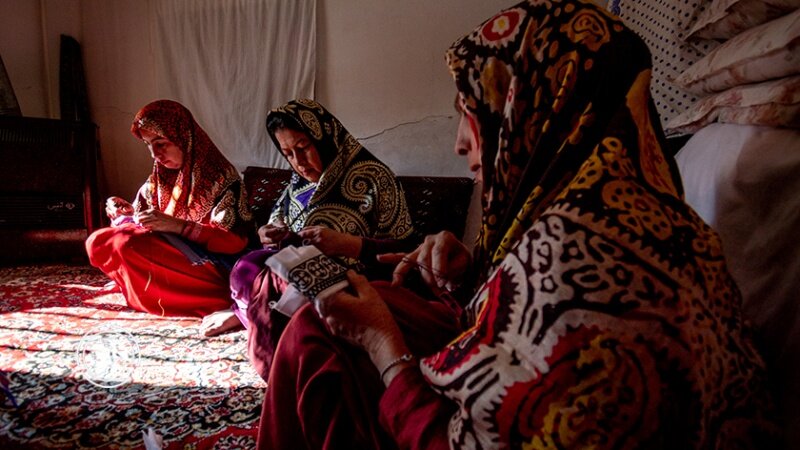Over 3,000 Iranian crafters practice Turkmen-style needlework

TEHRAN – The Turkmen-style needlework is practiced by more than 3,000 craftspeople in the northern Golestan province, a local tourism chief has said.
As the handicraft field has recently gained the UNESCO tag, more support needs to be provided for its crafters, Maryam Aqatabai explained on Thursday.
Introducing and promoting this traditional art could even attract more tourists to the region, she added.
Earlier this month, at the 17th session of the Intangible Cultural Heritage Committee of the Unite Nations Educational, Scientific and Cultural Organization (UNESCO), which was held in Morocco, Turkmen-style needlework was inscribed on the Representative List of the Intangible Cultural Heritage of Humanity jointly for Iran and Turkmenistan.
Needlework (Souzan-douzi in Persian) is a very common occupation among females in some regions of the country. It is the art of drawing images on plain fabrics by sewing delicate stitches using a needle and colorful yarns.
Turkmen-style needlework is a decorative applied art used on the national dress of people of all genders and ages in Turkmenistan and Iran.
In both countries, Turkmen-style needlework begins with the preparation of thin silk threads that are intertwined in three layers and twisted into a single thread, then straightened with a large needle.
According to UNESCO, this unique technology gives the thread a shine. For the most common needlework style, a series of loops is created by piercing the fabric with a thin needle and holding the previous loop with the thumb of the other hand. Other needlework styles vary according to the region.
There is no age limit, and young girls traditionally learn needlework from their mothers and grandmothers. In rural areas, the patterns used reveal the territorial identity of the needlewomen. They are also used to symbolize love, friendship, nature, and strength. The needlework is used on wedding clothes, in clothing for funerals and cultural events, and as decorative parts of ordinary clothing, such as scarves, coats, pants, shawls, and accessories.
Golestan is reportedly embracing some 2,500 historical and natural sites, with UNESCO-registered Gonbad-e Qabus – a one-millennium-old brick tower – amongst its most famous.
Narratives say the tower has influenced various subsequent designers of tomb towers and other cylindrical commemorative structures both in the region and beyond. The UNESCO comments that the tower bears testimony to the cultural exchange between Central Asian nomads and the ancient civilization of Iran.
ABU/AM
Leave a Comment